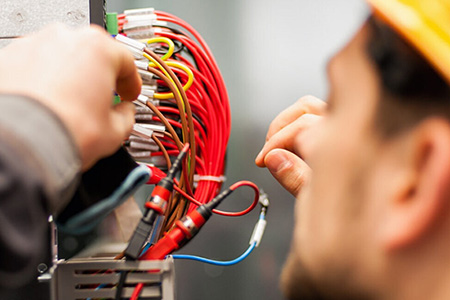According to my country's industry standard electrical […]
According to my country's industry standard electrical industry safety work regulations, electrical equipment is divided into two types: high voltage and low voltage: high voltage: the voltage of the equipment to ground is above 250V. Low voltage: The voltage of the equipment to the ground is 250V and below. According to the 2009 power line safety regulations, electrical work is divided into two types: high voltage and low voltage:
High-voltage electrical equipment: those with a voltage level of 1000V and above; low-voltage electrical equipment: those with a voltage level of 1000V or less;
Generally, high-voltage lines refer to 3-10 kilovolt lines; low-voltage lines refer to 220/380 volt lines.
The method of visually distinguishing the voltage of high-voltage rubber cables is as follows:

Know the voltage level
In my country's power industry, common voltage levels are 220 volts, 380 volts, 1,000 volts, 10,000 volts, 35,000 volts, 110,000 volts, 220,000 volts, and 500,000 volts. Under normal circumstances, 220 volts and 380 volts are considered low voltages, mainly for household electricity; 35,000 volts and above are high voltages, mainly used for power transmission. The one in between is medium pressure. It must be pointed out that touching high-voltage wires or carrying out live work under the wires is extremely dangerous.
Identify low-voltage lines
Outdoor low-voltage lines have several obvious characteristics:
1) Cement poles are basically used for support, and the cement poles are relatively short, generally no more than 5 meters.
2) The wire thickness is the same, and the number of wires is a multiple of 4. This is because low-voltage wires generally use a three-phase four-wire system. If you have these characteristics, you can determine that the line voltage of the wire is 380 volts, and the phase voltage is 220 volts. (The phase voltage is the line-to-ground voltage, and the line voltage is the voltage between the two lines)
Identify medium and high voltage lines
The medium and high voltage lines also have obvious characteristics:
1) If the wire thickness is the same, the number is a multiple of 3. This is because the transmission wire generally uses three-phase transmission. If these characteristics are available, the wire can be basically determined to be 10,000 volts.
2) If the wire thickness is not the same, the number of thick lines is a multiple of 3, and there are only 2 thin wires, and it is assumed that they are at a high place. This is because thin wires are not used for power transmission, but for lightning protection, also called lightning protection wires. If you have these characteristics, you can determine that the wire is a high-voltage line.
Further identification of high-voltage lines
In order to improve the transmission capacity, high-voltage wires generally use split wires. In general, there is one wire for one phase. Now several wire bundles are used together to replace the original one. Knowing this, it is easy to determine the voltage level of the wire.
1) One phase and one wire is 110,000 volts;
2) One phase with two wires is 220,000 volts;
3) One phase with four wires is 500,000 volts.